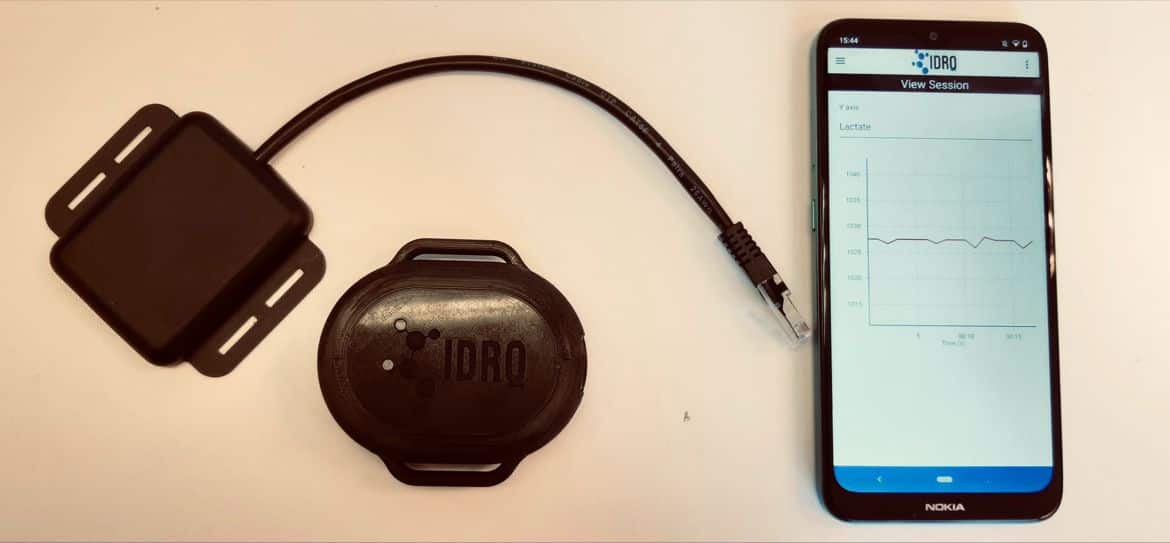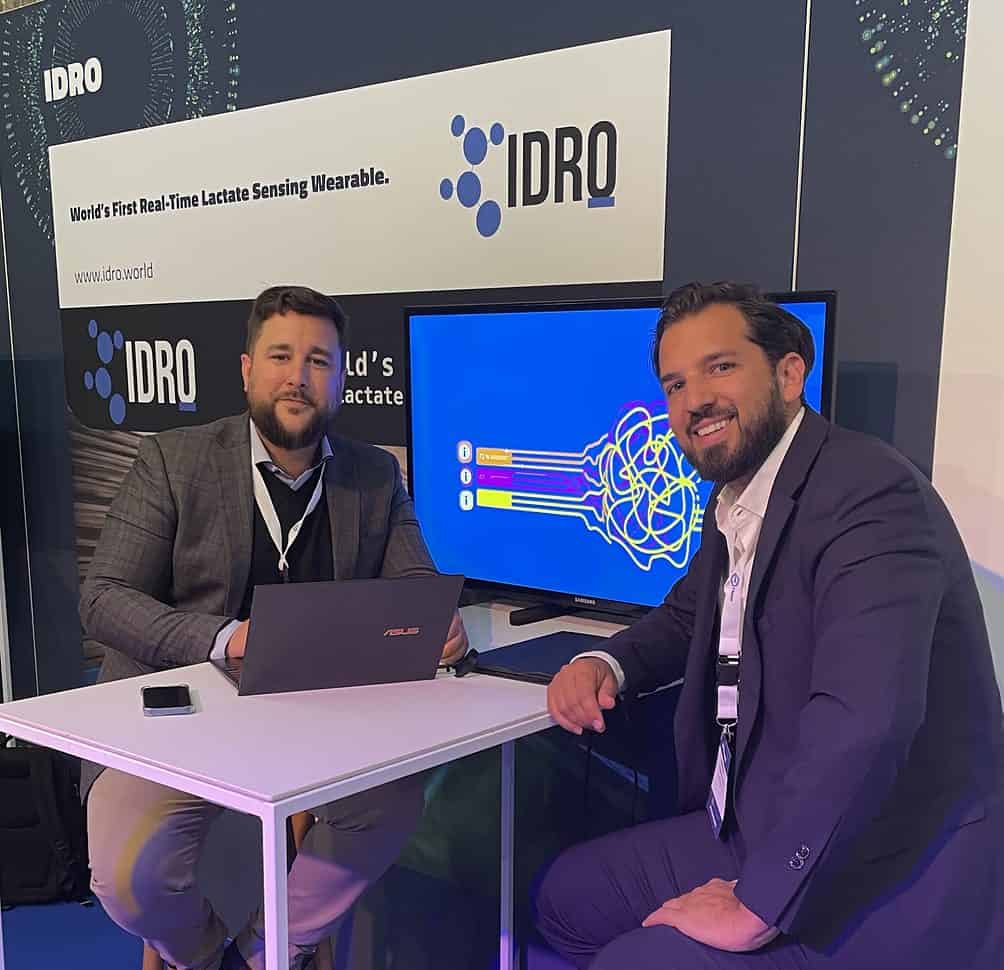
About IDRO
- Founders: Maarten Gijssel, Gaston Crespo, Maria Cuartero Botia and Pierre Padilla (in collaboration with EIT Digital)
- Founded in: 2020
- Employees: 6
- Money raised: -
- Ultimate goal: become the world leader in lactate measurement
Improving sports performance based on data is nothing new. Running apps like Strava collect data such as your speed and route. Start-up IDRO goes one step further. They use a wearable to measure lactate, a substance in your body that can cause muscle acidosis. You can optimize your sports performance by gaining insight into your personal lactate values. In this instalment of Start-up of the day, co-founder Maarten Gijssel tells us more about it.
How does the wearable work?
“We offer a wearable in the form of a device and an app linked to our system. You strap the device onto the active muscles during exercise. This is usually near the lower back or upper leg. The device is especially suitable for endurance sports such as running, cycling, rowing and skating.
When you exercise, and therefore sweat, drops of sweat reach the sensors through a gully. An electronic reaction takes place between the sweat and the sensors. This is passed on to our server and then also to the application. The data you see is a curve of a certain lactate value, expressed as a number. As a result, you can see exactly what your personal limit is. Simply put, this tells you how much percentage is left in your physical ‘battery’.”
What can you do with that data?
“Because you can view the data, you can stay exactly below the level that causes you an injury. In this way, you can improve your sports performance. Advice or motivation is displayed in the app that says you can do more, you can go faster, or you should stop. Or you get a message that you recovered well yesterday. This allows you to determine when the ideal time is to top. For example, when you are preparing for a running competition.”
How did you come up with the idea?
“I was trained as a health scientist and became a physiotherapist. I quickly made the switch to entrepreneurship in my career. At one point I thought: I can achieve much more with data than with my hands. I have more health technology companies and realized I needed to expand the toolbox a bit.
What I do in other companies focuses more on whether or not you adopt the right posture and technique in sports and how that affects your performance. With IDRO we look more at what the heart, organs and blood do. Both are extremely important, but what we do with IDRO is much more innovative. I started as an entrepreneur who wanted to turn his hobby into his job. For IDRO, we work quite closely with the customer to make a perfect product and we really want to become a world leader.”

Why is it innovative?
“We are one of the first companies in the world to do real-time lactate measurements. There is one other company that also measures lactate, but they only measure the wrist. We know that you get even more accurate results if you measure on the active muscle. I was invited by two world-leading scientists in this field from the University of Stockholm, who wanted to market their results and needed an entrepreneur. The researchers are investigating the connection between sweat, lactate and performance. The data-driven information of users helps with this.”

What problem are you trying to solve?
“As a (top) athlete, it is difficult to estimate how much you can handle when you train for a goal. If you have to do a lactate measurement yourself, you have to take a blood test at least fifteen times in fifteen minutes. We know from market research that the target group finds this a problem. In the long term, we want to focus on the consumer market. Now we mainly focus on top athletes. They already know what lactate measurements are and what you can do with them, while it is still relatively unknown to the masses.
We already work together with the Royal Dutch Skating Association (KNSB). Thanks to the lactate measurement, you no longer need to be pricked and you have immediate results. As an athlete, you constantly want to know: what is going on in my body? Can I continue at full speed or should I take it easy? With our technique, you work more efficiently, accurately, and faster than when you draw blood.”

What are your biggest challenges?
“We are entering a market where there are different opinions about the use of lactate. There is no scientific standard and everyone still does their own blood and performance measurements. It is therefore up to us to show that there can be a standard. The automation of production processes is another thing. All components are ready, but we still have to scale production. In other words: the coffee machine is already there, but the coffee capsules are still filled by hand.
We currently only have fifty wearables on the market because the sensors are now made by hand. That’s very time-consuming. We hired a new colleague for automation. This year we want to have the wearables in the webshop for international sale. And then hopefully there will be at least 500,000.”

